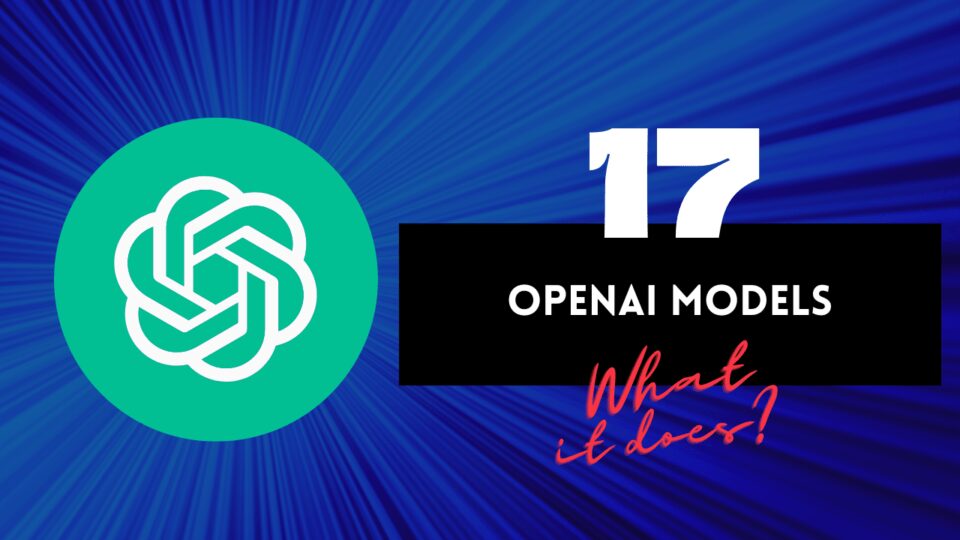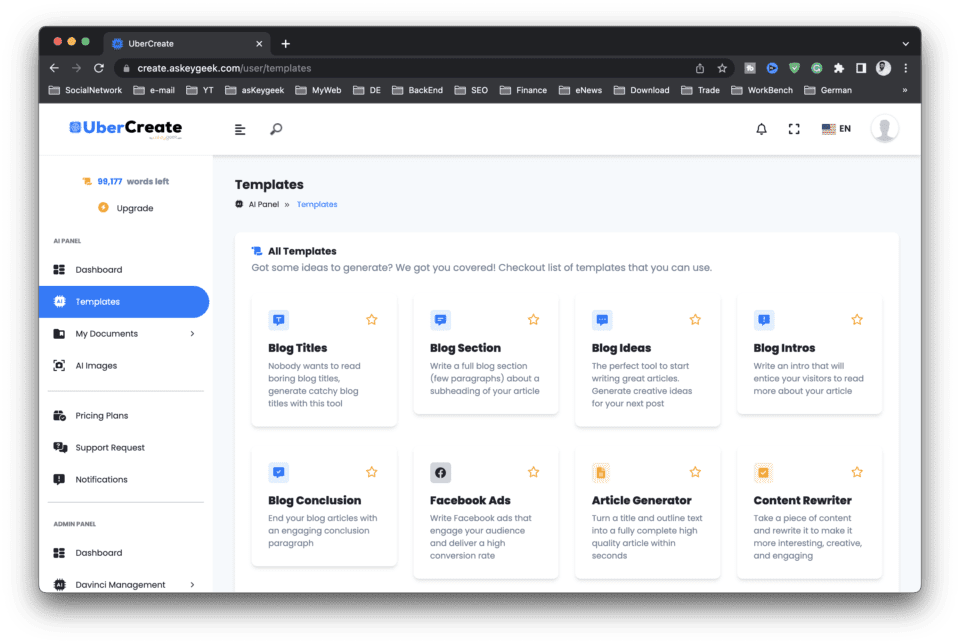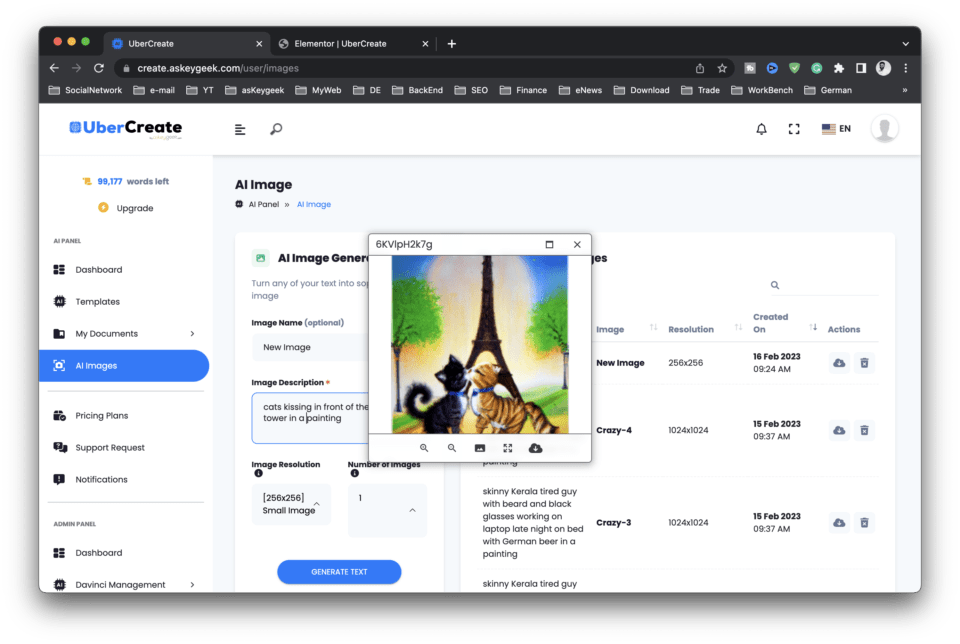What is OpenAI?
OpenAI is a research organization that aims to create artificial intelligence (AI) systems that can perform a wide range of tasks across different domains. The company was founded by Elon Musk, Sam Altman, and others in 2015 and is headquartered in San Francisco.
OpenAI conducts AI research with the declared intention of promoting and developing a friendly AI. OpenAI systems run on the fifth most powerful supercomputer in the world.
OpenAI Models
One of the main ways that OpenAI showcases its AI capabilities is through its models, which are programs that can process various kinds of inputs (such as text, images, audio, etc.) and produce outputs (such as text, images, audio, etc.) based on some logic or rules.
OpenAI has developed and released several models over the years, each with different features and applications. In this blog post, we will explore how many OpenAI models are available, what they can do, and how you can access them.
Below are some of the top 17 most OpenAI models available now:
GPT-4
GPT 4 is the latest and most advanced model from OpenAI, which can understand and generate natural language or code, as well as accept image inputs and emit text outputs.
GPT-4 is a large multimodal model that exhibits human-level performance on various professional and academic benchmarks, such as passing a simulated bar exam or solving math problems.
GPT-4 is currently in a limited beta and only accessible to those who have been granted access.
GPT-4 has four variants:
Try UberCreate to generate Articles and Code using the latest OpenAI GPT 4 models
GPT-4o
GPT-4o is currently the most advanced model from OpenAI. GPT-4o (“o” for “omni”), is multimodal, accepting both text and image inputs and generating text outputs. It has the same high intelligence as GPT-4 Turbo but is more efficient—generating text twice as fast and at 50% lower cost.
Additionally, GPT-4o performs well across non-English languages and has excellent vision capabilities. GPT-4o model is nw available in UberCreate.
GPT-4 Turbo
These are the previous high-intelligence models. They also accept text and image inputs and produce text outputs. GPT-4 Turbo is faster and more affordable than GPT-4
GPT-4
The base gpt-4 model has a context length of 8,192 tokens and is updated with the latest model iteration.
GPT-4-0314
The gpt-4-0314 model is a snapshot of gpt-4 from March 14th 2023 and will only be supported for a three month period ending on June 14th 2023.
GPT-4-32k
The gpt-4-32k model has the same capabilities as the base gpt-4 model but with 4x the context length (32,768 tokens).
GPT-4-32k-0314
The gpt-4-32k-0314 model is a snapshot of gpt-4-32k from March 14th 2023 and will also only be supported for a three month period ending on June 14th 2023.
GPT-3.5
A set of models that can understand and generate natural language or code, with improved performance and cost-effectiveness compared to GPT-3. The most capable model in this family is gpt-3.5-turbo, which has been optimized for chat but works well for traditional completion tasks as well.
GPT-3.5 has five variants:
GPT-3.5-turbo
The base gpt-3.5-turbo model is optimized for chat but works well for traditional completions tasks as well. It has a context length of 2,048 tokens and is updated with the latest model iteration.
The other four models are fine-tuned versions of gpt-3.5-turbo for specific domains.
GPT-3.5-turbo-codex
Codex is based on GPT-3 and fine-tuned on a large corpus of source code from various programming languages. It is a system that can generate and execute code from natural language commands. It can also answer questions about code, explain code snippets, fix bugs, and suggest improvements.
Codex for code generation and understanding. Codex can be used for tasks such as creating websites, apps, games, or scripts.
Codex was released in August 2021 and has 12 billion parameters.
GPT-3.5-turbo-davinci
Davinci is for natural language understanding and generation. Davinci is based on a deep neural network that can process large amounts of natural language data and generate coherent and diverse texts on various topics and domains. Davinci can also answer questions, summarize texts, write essays, create stories, and perform many other natural language tasks. Davinci is one of the most advanced and versatile AI models available today
GPT-3.5-turbo-curie
Curie for text summarization and question answering. It can generate high-quality text for a variety of tasks, such as summarization, question answering, translation, and more. Curie is based on the GPT-3 architecture, but it has been fine-tuned on a large corpus of web texts to improve its performance and accuracy. Curie can also handle multiple domains and languages, making it a versatile and flexible tool for natural language generation.
GPT-3.5-turbo-babbage
Babbage for text classification and sentiment analysis. Babbage can take inputs such as tables, charts, graphs, or spreadsheets, and produce concise and accurate descriptions of the main insights or trends. Babbage is designed to help data analysts, researchers, journalists, and anyone who works with data to communicate their findings more effectively and efficiently.
DALL·E
DALL-E is a generative model that can create images from text descriptions. It can also manipulate existing images based on text inputs. DALL-E is a combination of GPT-3 and a variational autoencoder (VAE), which is a type of neural network that can learn to compress and reconstruct data. DALL-E was released in January 2021 and has 12 billion parameters.
This is. a model that can generate and edit images given a natural language prompt, such as “two cats kissing in front of the Eiffel Tower in painting” or “a painting of a landscape in the style of Van Gogh”. DALL·E can also combine multiple concepts or attributes in a single image, such as “a snail made of harp” or “a giraffe wearing glasses and a bow tie”.
Try using UberCreate AI Image Generator to turn any of your text into a sophisticated image. You have the option to select varieties of Art styles like Abstract, Realistic, 3D Render, Digital Art etc. in various Image Mediums like Acrylic, Charcoal, Canvas, Classic Oil etc. and in specific Moods like Happy, Cheerful, Angry, Calm etc.
Options are unlimited with UberCreate, all you need Creativity!!!
TTS (Text-to-Speech)
A set of models that convert text into natural-sounding spoken audio.
Below are the Neural and Standard OpenAI Text To Speech voices you can use in UberCreate.
| Voice Names | Female (Neural) | Male (Neural) | Neural Voices Total | Female (Standard) | Male (Standard) | Standard Voices Total | Grand Total |
| Alloy | 55 | 55 | 54 | 54 | 109 | ||
| Echo | 55 | 55 | 55 | 55 | 110 | ||
| Fable | 55 | 55 | 55 | 55 | 110 | ||
| Nova | 55 | 55 | 55 | 55 | 110 | ||
| Onyx | 54 | 54 | 55 | 55 | 109 | ||
| Shimmer | 55 | 55 | 55 | 55 | 110 | ||
| Grand Total | 110 | 219 | 329 | 110 | 219 | 329 | 658 |
Embeddings
OpenAI model Embeddings are a way of representing natural language in a numerical form that can be used by machine learning models. Embeddings capture the meaning and context of words and sentences, and enable models to perform tasks such as text classification, sentiment analysis, question answering, and more.
Whisper
A model that can convert audio into text, such as transcribing speech or music. Whisper can also perform tasks such as summarizing audio clips, extracting keywords, or generating captions.
Moderation
A fine-tuned model that can detect whether text may be sensitive or unsafe, such as containing profanity, hate speech, personal information, or spam. Moderation can be used for filtering out inappropriate content or flagging potential issues.
OpenAI Open Source Models
In addition to these models, OpenAI has also published open source models such as Point-E, Jukebox, and CLIP, which have been featured in its research papers. These models have different capabilities and limitations than the ones available through the OpenAI API.
Point-E
Point-E is a new model developed by OpenAI that can extract and summarize the main points from any text. It uses a combination of self-attention and pointer networks to identify the most relevant sentences and phrases in a document and generate a concise summary. Point-E can be applied to various domains such as news articles, scientific papers, reviews, emails, etc. Point-E is fast, accurate and easy to use. You can try it out on the OpenAI Playground or read more about it on the OpenAI blog.
Jukebox
A generative model that can create music with lyrics and vocals. It can also remix existing songs, change the style or genre of music, and generate songs from scratch based on artist names or genres. Jukebox is based on a transformer model that is trained on a large dataset of music from various genres and artists. Jukebox was released in April 2020 and has 5 billion parameters.
CLIP
A vision model that can learn from natural language supervision. It can classify images into thousands of categories based on text labels or captions. It can also perform zero-shot learning, which means it can recognize objects or concepts that it has never seen before. CLIP is a contrastive learning model that learns to associate images and texts by maximizing their agreement. CLIP was released in January 2021 and has 400 million parameters.
According to the OpenAI website, there are currently 10 models available through the API (excluding the open source ones), with different price points and access levels. However, this number may change over time as OpenAI develops new models or updates existing ones.
We will try to keep this article up to date with the latest OpenAI models. To learn more about each model and how to use it, you can visit the OpenAI API documentation page.
Is OpenAI Open Source?
That brings us to another common question asked by most people, “Is OpenAI open source”?
OpenAI was founded in 2015 as a non-profit entity with a pledge of over $1 billion from various donors, including Elon Musk, Reid Hoffman, Peter Thiel, and others. However, in recent years, OpenAI has shifted its structure and strategy, becoming a hybrid of a non-profit and a for-profit entity.
OpenAI has two entities: a non-profit corporation (OpenAI Inc.) and a for-profit corporation (OpenAI LP). The non-profit oversees the vision and governance of the organization, while the for-profit develops and deploys AI products and services.
Microsoft’s Investments in OpenAI
In 2019, OpenAI announced the creation of OpenAI LP, a for-profit subsidiary that would allow it to raise more funds from investors and attract top talent. Microsoft invested $1 billion in OpenAI LP and became its exclusive cloud provider . In 2021, OpenAI launched its commercial arm, OpenAI Codex, which offers access to its powerful AI models and services for a fee. Microsoft invested another $10 billion in OpenAI Codex in 2023 .
As a result of these changes, OpenAI has become less transparent and more secretive about its research and products. For example, OpenAI has not released the source code or the training data of its latest and most advanced language model, GPT-4, which can generate coherent and diverse texts on almost any topic.
As Motherboard has noted before, this is a complete 180 from OpenAI’s founding principles as a nonprofit, open-source entity . AI researchers are warning about the potential consequences of withholding this information, such as creating monopolies, stifling innovation, and increasing risks of misuse and bias .
Therefore, the answer to the question “Is OpenAI open source?” is not straightforward. While some of its projects and tools are still open source and available on GitHub , others are closed source and proprietary. OpenAI claims that it is still committed to its original vision of creating and ensuring the safe use of general AI that can outperform humans at most tasks, but it also acknowledges that it faces trade-offs and challenges in balancing its social and commercial goals .
Final Thoughts
To summarize, the OpenAI API currently offers 13 GPT models (four GPT-4 models and nine GPT-3.5 models) and four feature-specific models (DALL·E, Whisper, Embeddings and Moderation). These models have different capabilities, context lengths and availability statuses as explained above. You can learn more about each model and price points by visiting the OpenAI API documentation or the OpenAI website.
While OpenAI models are popular in the market, many other powerful models are available, like Claude 3 models from Anthropic, Gemini from Google, etc.





One Response
great post